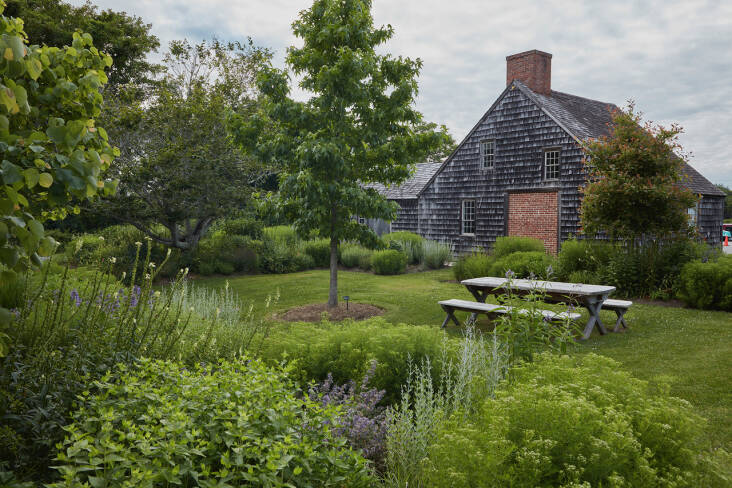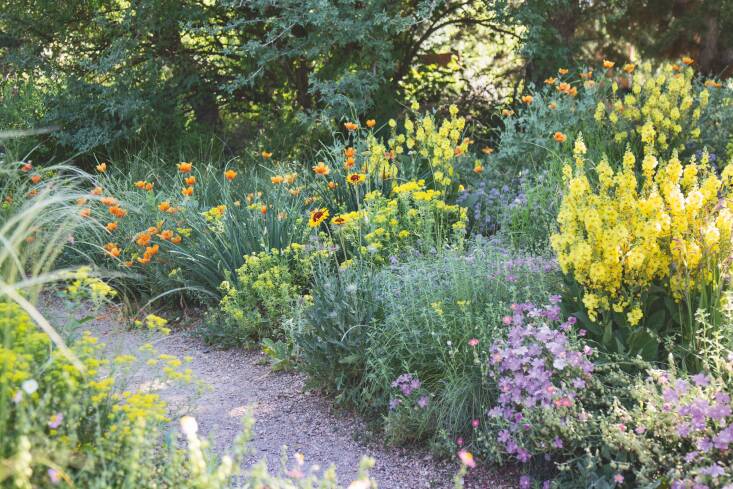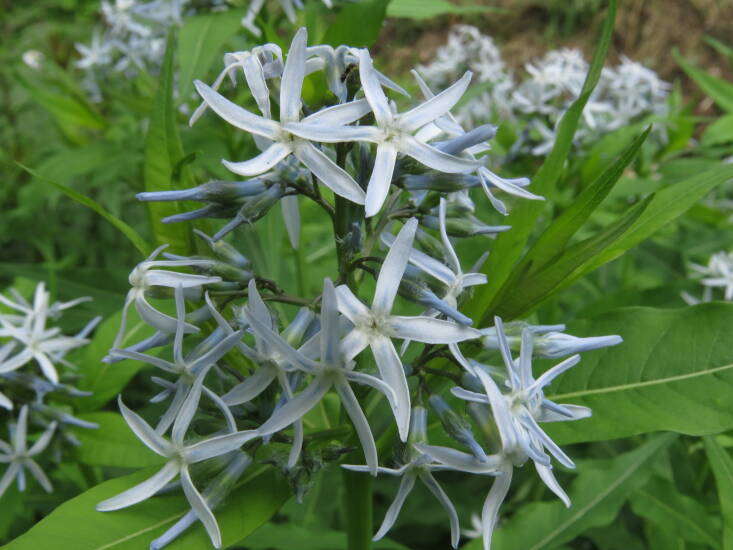This is part of a series with Perfect Earth Project, a nonprofit dedicated to toxic-free, ecological gardening, on how you can be more sustainable in your landscapes at home.
When the realities of climate change start to feel overwhelming, focus on local action. Research shows that small habitats can have a big impact on biodiversity. As homeowners begin to take action in their own yards, some municipalities across the country are leading by example. On the East End of Long Island, the community of East Hampton, NY, transformed 4,000 square feet of horticulturally barren (and boring) lawn at its town hall into a dynamic pollinator garden.
“Small towns are where environmental changes can happen quickly,” says Abby Lawless, principal of Farm Landscape Design, who designed the ChangeHampton Community Pollinator Garden at East Hampton’s Town Hall pro bono. Spearheaded by ChangeHampton, a nonprofit dedicated to promoting restorative landscaping, the public-private partnership garden is a testament to the power of community and its ability to help with the biodiversity crisis. “We wanted to create an ecological model that inspires and teaches our community,” says Gail Pellett, co-founder of ChangeHampton. “You can have a beautiful landscape that is healthy for us and all the insects, birds, and animals.” We asked Lawless and Pellett to share some advice on how to get your own town to lead the way.
Form an A-team.
Above: “The garden is really about building community and showing our community that there’s an alternative to the ecological dead zones of turf lawns,” says Pellett. The picnic table bench was designed by Stephan Van Dam and built by Paul Gartside, a local boat builder and volunteer at ChangeHampton. The wood for the table and bench was donated by Remy Tree, an arborist from Sag Harbor. Photograph by Tria Giovan.
“It takes a lot of organization and coordination,” says Pellett. “So first you need to assemble a group of people who are really committed to seeing the project through.” After selecting Lawless as the pollinator garden’s designer, the passionate and determined team behind ChangeHampton pitched the plan to the East Hampton board. Once they received permission to convert an area in the town hall campus, Pellett, along with co-founder and president of the board, Stephan Van Dam, raised funds from grants and donations to purchase plants, pay for the labor-intensive landscaping, create signage for the garden, and handle publicity.
Engage the community.
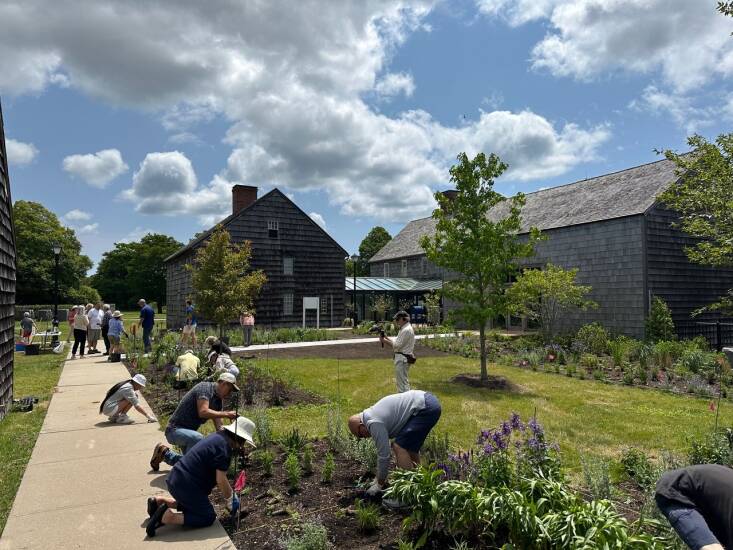 Above: On a beautiful June day in 2023, volunteers of all ages came together to help with the pollinator garden installation. Photograph by Abby Lawless.
Above: On a beautiful June day in 2023, volunteers of all ages came together to help with the pollinator garden installation. Photograph by Abby Lawless.
“A pollinator garden is a really great way to build community,” says Lawless. “It is a meeting point between humans and wildlife.” To mobilize their efforts, ChangeHampton reached out to residents, local businesses, and students to take an active role in the process. Abby Lawless contributed the design and planting plan. She continues to consult on all aspects of the design. Whitmores, a local nursery, donated a mix of native trees including a black tupelo, redbud, sweetbay magnolia, and red oak. Students from local schools joined with community groups and master gardeners to prep and plant the garden. Paul Munoz of Eco Harmony Landscaping provided the heavy lifting and also continues to help today.
Lay the groundwork.
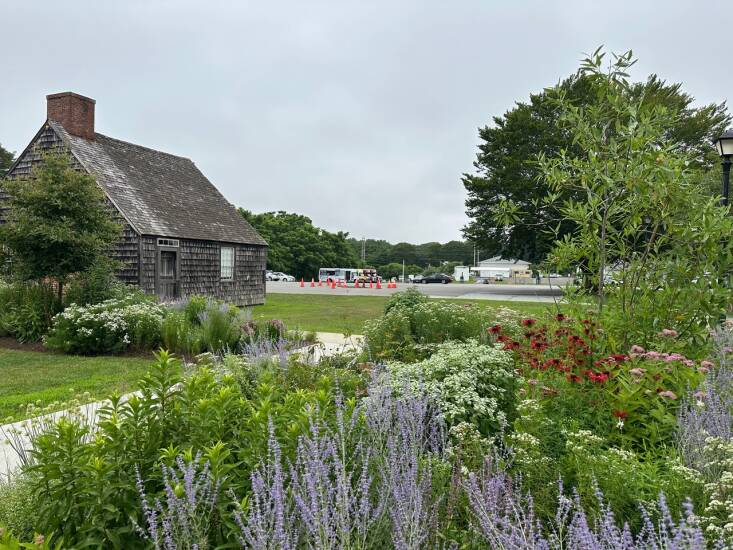 Above: Town hall receives a lot of foot traffic during the summer months. It’s where people attend meetings, see the town clerk, pick up coveted beach parking permits, and even get a marriage license. Photograph by Tria Giovan.
Above: Town hall receives a lot of foot traffic during the summer months. It’s where people attend meetings, see the town clerk, pick up coveted beach parking permits, and even get a marriage license. Photograph by Tria Giovan.
In fall 2022, they prepped the garden beds by following the “lasagna” method. They started by cutting the lawn very short. Then they covered the planting area with reused cardboard (with packing tape removed) and topped it with a mix of compost, leaf mold, and wood chips. By the following June, when they were ready to start planting, Lawless was amazed at how rich the soil was. “You could dig into it easily with a hand spade,” she says.
Make it beautiful.
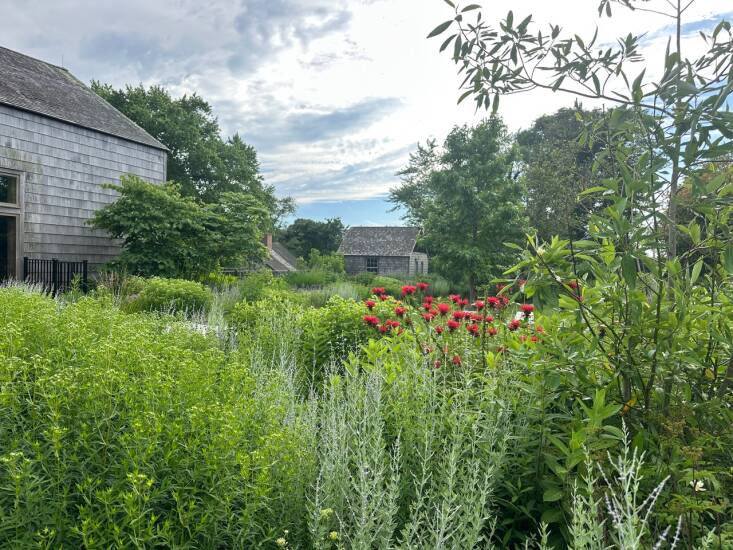 Above: The native Monarda didyma adds a pop of red to the border in mid-summer and is a magnet for native bees, hummingbirds, and butterflies. It’s also a host plant for several moths including the hermit sphynx. Photograph by Abby Lawless.
Above: The native Monarda didyma adds a pop of red to the border in mid-summer and is a magnet for native bees, hummingbirds, and butterflies. It’s also a host plant for several moths including the hermit sphynx. Photograph by Abby Lawless.
When Lawless designed the garden, the brief was clear: make it beautiful; make it colorful; and make it eye-catching. She opted for a formal layout with large clearly defined beds and clean borders. Then she selected an array of pollinator-loving and deer-resistant plants, including Agastaches, mountain mints, and milkweeds. The garden features more than 80 percent native plants, which exceeds the 70 percent research indicates is needed to support healthy populations of birds, bees, and butterflies. The few nonnatives included—Russian sage and Nepeta, for example—were chosen for their deer hardiness. To keep the garden low-fuss, she made sure to select plants that wouldn’t require staking.
Don’t forget about maintenance.
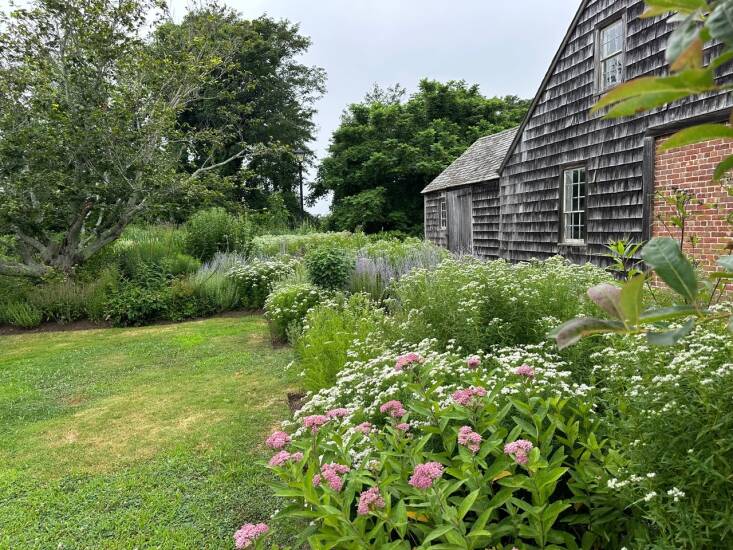 Above: According to the Suffolk County Water Authority, 70 percent of the water they pump is used outside—mostly on lawn irrigation. Since they evolved in their region, native plants and trees, once established, typically do not need supplemental watering. Photograph by Tria Giovan.
Above: According to the Suffolk County Water Authority, 70 percent of the water they pump is used outside—mostly on lawn irrigation. Since they evolved in their region, native plants and trees, once established, typically do not need supplemental watering. Photograph by Tria Giovan.
A garden isn’t static, but it is constantly evolving. Developing a maintenance plan is essential. In East Hampton, two master gardener volunteers come by for about an hour each week to tend the garden, including weeding out any mugwort or crab grass that pops up. Munoz and his Eco Harmony Landscapes team visit regularly to keep the edges of the beds clean, a “cue to care” that signals to passers-by that the garden is being cared for intentionally. Pellett also stresses the importance of making sure there is a nearby water supply, which is especially important when the plants and trees are establishing themselves during those first few years.
Keep going!
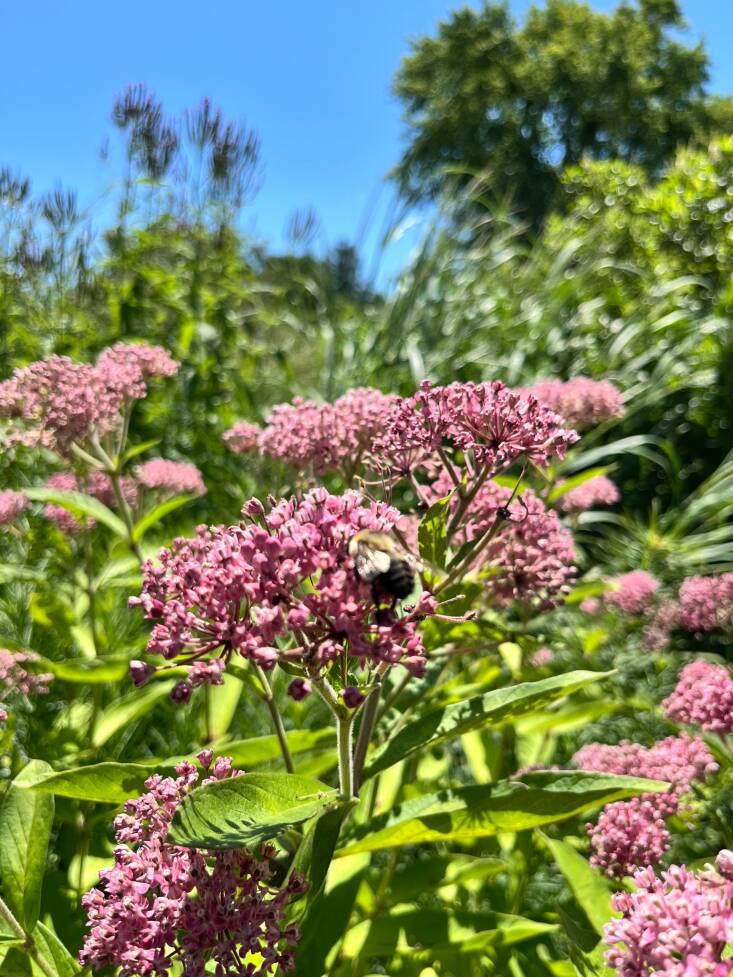 Above: In addition to providing food for monarch caterpillars, swamp milkweed (Asclepias incarnata) blooms attract bees and other pollinators. Lawless planted swathes of it as well as the orange butterfly weed (A. tuberosa) in the beds. Photograph by Tim Wheeler.
Above: In addition to providing food for monarch caterpillars, swamp milkweed (Asclepias incarnata) blooms attract bees and other pollinators. Lawless planted swathes of it as well as the orange butterfly weed (A. tuberosa) in the beds. Photograph by Tim Wheeler.
“Long Island used to have thousands of acres of native grasslands,” says Pellett. After the success of the pollinator garden, ChangeHampton decided to honor the ecosystem’s history and grow 14,000 square feet of native grasslands meadows, also designed by Lawless. This spring, volunteers planted more than 5,000 native grass and pollinator-friendly perennial plugs. And now, just a few months later, the meadow is flourishing nearby the pollinator garden. The success shows how gardeners around the country can join forces, create new habitat, and inspire new gardens—and gardeners. “The town hall campus went from a quiet, nothing place to one that’s very much alive,” says Lawless. “Whenever I’m there, I’m surprised at how much energy and hope it gives me.”
Before
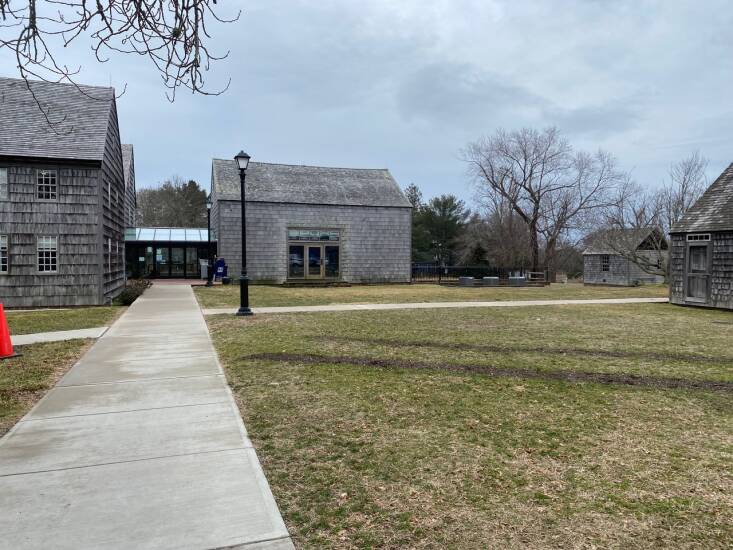 Above: Before the garden was planted, the area was just a conventional, thirsty lawn with a sick beech tree. “We opted to keep the dying beech tree in the mix,” says Lawless. “It now has a soft landing and has rebounded a bit.” Photograph by Abby Lawless.
Above: Before the garden was planted, the area was just a conventional, thirsty lawn with a sick beech tree. “We opted to keep the dying beech tree in the mix,” says Lawless. “It now has a soft landing and has rebounded a bit.” Photograph by Abby Lawless.
See also:

